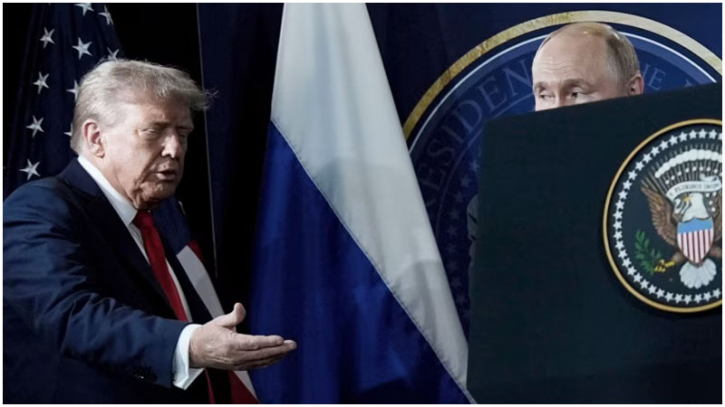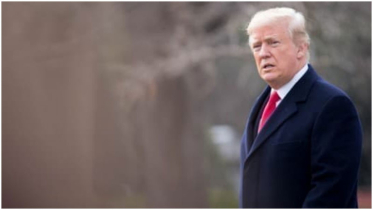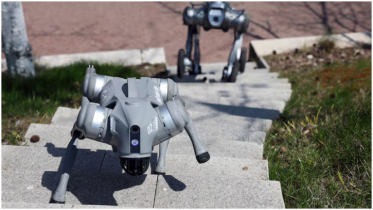No concessions, no ceasefire how Putin outplayed Trump in Anchorage

After returning from Alaska on Saturday, Vladimir Putin told top officials assembled in the Kremlin that his summit with Donald Trump had “brought us closer to the necessary solutions”.
Those solutions, Putin stressed, involve Ukraine’s capitulation to the maximalist demands that prompted his 2022 invasion. “Settling these root causes [for the war] must be the foundation for a settlement,” he said.
The extraordinary meeting at Anchorage’s Elmendorf Air Force base has ended Putin’s pariah status and brought Washington’s stance on the war closer to Moscow’s.
And Putin did not need to budge an inch.
“Before the summit Trump was giving Putin ultimatums and threatening consequences. In the end there were no consequences for Putin not agreeing to a ceasefire,” said Ilya Matveyev, an exiled Russian political scientist at the independent Public Sociology Laboratory.
“Putin got what he wanted — to play for time and press his military advantage over Ukraine.”
Putin arrived on US soil armed with flattery. He repeated Trump’s frequent claim that Russia would not have invaded if he, not Joe Biden, had been in power. Trump nodded.
Trump later told Fox News host Sean Hannity that Putin had assured him that he was cheated out of the 2020 election. The Russian praised him for making the US “hot as a pistol”.
It was another display of Putin’s ability to enthral Trump — as he did during their 2018 Helsinki summit when the US president sided with him over US intelligence on Moscow’s meddling in the 2016 presidential election. Trump railed against the “Russia hoax”, as he calls it, to Hannity.
Now, just weeks after Trump threatened dire consequences if Russia did not agree to a ceasefire in Ukraine, Putin appears to have swung the US president back into his camp.
“Putin felt a necessity to do something dramatic to flip that script without actually giving anything away, and he seems to have managed to do that,” said Samuel Greene, a professor of Russian politics at King’s College London.
“The only gift Putin brought to Anchorage was a lot of praise.”
Trump rolled out a red carpet for Putin, laughed with him in the presidential limousine, and posed for pictures as US military aircraft flew overhead.
The lavish welcome sparked a backlash in Washington — but celebration in Moscow.
Russian ideologue Alexander Dugin spelt out the sense of victory. “Trump has restored [Putin’s] status as a world leader who can be dealt with,” he wrote on Telegram. “We won’t stop fighting the war because of this, of course, but it is a starting point.”
Analysts say Putin successfully reframed negotiations so that a ceasefire is now the end goal rather than the starting point.
Trump has endorsed Putin’s call for a comprehensive end to the war, posting on his Truth Social platform on Saturday that “the best way” was “to go directly to a Peace Agreement . . . and not a mere Ceasefire Agreement, which often times do not hold up”.
There is little sense for Putin to agree to a ceasefire as long as his forces retain the upper hand on the battlefield, said Alexander Gabuev, director of the Carnegie Russia Eurasia Center in Berlin.
“The war is his main leverage,” he added. “If the war were going well for Ukraine, nobody would want a ceasefire. So the European and Ukrainian demand for a ceasefire looked pathetic and unrealistic.”
The Russian leader also used the summit to spell out demands that Kyiv will find difficult to accept.
Putin told Trump he would freeze the conflict along much of the frontline if his demands were met and if Ukraine withdrew from the Donbas, the vast eastern region Russia has tried to take over since 2014. He has also long demanded that Ukraine renounce its ambition to join Nato.
Putin’s demands would all but end Ukraine’s statehood in its current form and overturn the post-cold war security architecture in Europe while ceding key strategic positions to Russia.
“Until Russia gets clear guarantees about that, you can’t talk about ending the war, because this was the reason for starting it,” said Vasily Kashin at Moscow’s Higher School of Economics. “That’s why Russia can’t agree to a ceasefire along the frontline, because we know they’ll stop taking us seriously the moment that happens.”
The US told Ukraine and its European allies that Putin’s offer was a compromise. In reality, he has hardened his position from as recently as April, when he told Trump’s special envoy Steve Witkoff he would freeze the entire frontline in exchange for settling the “root causes”.
Michael McFaul, a former US ambassador to Russia, said Trump had moved closer to Putin’s position. “Maybe giving all of Donbas is just a maximalist demand at the beginning of negotiations. But maybe not. Maybe it’s a poison pill that guarantees the war will drag on for a long time,” McFaul said.
Putin did not get everything he wanted from the summit.
He wanted to restore bilateral relations and both sides had talked up potential commercial agreements. But top Russian economic officials Kirill Dmitriev and Anton Siluanov, who flew with Putin to Alaska, did not join the presidents’ meeting.
The US and Russia also remain divided on next steps. Trump has put the onus on Ukraine’s President Volodymyr Zelenskyy to negotiate a deal with Putin at a future summit. But the Kremlin, which has consistently rejected such calls, said this was not raised in Alaska.
Unresolved is how Ukraine’s western allies would guarantee its security if Kyiv were barred from joining Nato.
“The issue from the Ukrainian position is not where the line is, but what guarantees their security after the ceasefire — who is going to start shooting back at the Russians if the Russians start fighting again,” Greene said.
Russia might accept an equivalent to Nato’s Article 5 mutual defence clause, Kashin said, allowing western countries to come to Ukraine’s aid if attacked but not deploy troops or weaponry there beforehand.
But that may be further than Trump is willing to go — and not enough for Ukraine.
“Trump’s view of security guarantees has been: look, I have this relationship with Putin, as long as I’m in office, he won’t invade. He may believe that, but the Ukrainians and the Europeans don’t see it as sufficient,” Greene said.
Until these matters are resolved, the conflict rolls on, with Anchorage another tactical victory for Putin as he pursues his war aims.
“The objectives of the ‘special military operation’ will be achieved either by military or diplomatic means,” Russian senator Andrey Klishas wrote on his Telegram channel.
“There will be no ‘unconditional ceasefire’, even as the front collapses and Russian troops liberate more and more territory. The agenda is a new architecture of European and international security — and everyone has to accept it.”
.png)




